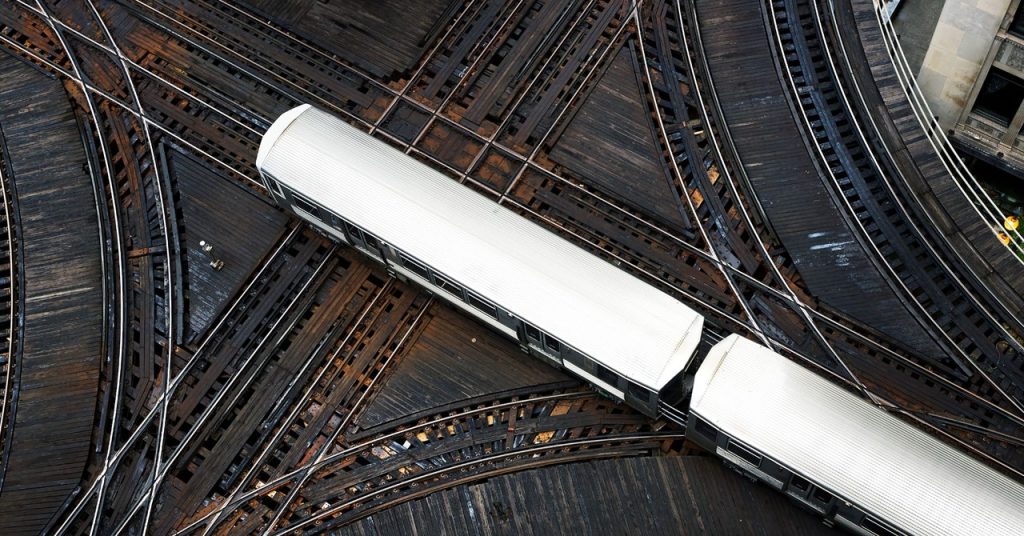Fiber Optic Cables: The Ears Beneath Our Feet
Imagine a vast network of fibrous ears, stretching for miles beneath the earth’s surface, attentively listening to the world above. As you walk or drive over these buried fiber optic cables, your movements create distinct vibrations that subtly alter the way light travels through them. With specialized equipment, scientists can analyze these disturbances to gain unprecedented insights into the Earth’s rumblings at various locations, much like a stethoscope for the planet.
Bringing DAS to the Railways
Researchers are now exploring the potential of Distributed Acoustic Sensing (DAS) technology in the realm of railroads. When a train traverses a section of track, it generates vibrations that can be monitored over time. Sudden changes in this signal may indicate issues with the rail, such as cracks or broken ties. In the event of a rockslide on a mountain pass, DAS could detect the disturbance and alert railroad operators before human eyes spot the problem. Gradual shifts in the signal might also reveal developing faults in track alignment.
Utilizing Existing Infrastructure
Fortunately, many railways already have fiber optic cables running alongside them for signaling equipment or telecommunications purposes. As Hossein Taheri, an engineer studying DAS for railroads at Georgia Southern University, points out:
You’re utilizing the already available facilities and infrastructure for that, which can reduce the cost. There could be some railroads where they don’t have the fiber, and you need to lay down. But yes, most of them, usually they do already have it.
Pinpointing Disturbances with Precision
To access the fiber optic cables, an interrogator device is required. This device sends laser pulses through the cables and analyzes the tiny fragments of light that reflect back. For example, if a rock strikes the track 20 miles away from the interrogator, it creates a distinctive ground vibration that disturbs the nearby fiber optics, which is then detected in the light signal. By measuring the time it takes for the signal to return to the interrogator, scientists can accurately determine the distance to the disturbance within 10 meters (approximately 30 feet).
Profiling the Track’s Acoustic Signature
To effectively utilize DAS for railways, a vibration profile of a normal, healthy track is first established over a period of time. When the DAS data begins to deviate from this baseline, it may indicate a developing issue, much like an EKG detecting an abnormality in a human heartbeat. Daniel Pyke, a rail expert and spokesperson for Sensonic, a company that develops DAS technology for railroads, explains:
What we’re doing is profiling the track, looking for changes in the acoustic signature. We know what track should sound like, we know what a train should sound like. And we know that if it’s changing—so let’s say this joint is coming loose—that needs someone to go and fix it before it becomes a problem.
Monitoring Vast Distances and Detecting Anomalies
According to Pyke, Sensonic’s system can monitor track for up to 40 kilometers (25 miles) in either direction from its interrogator. This continuous monitoring could potentially reduce the need for human labor in inspecting railroad tracks worldwide, a hazardous job given the presence of massive, fast-moving machines. The system can also detect if someone is digging at the cables to steal copper or if people are trespassing along the tracks.
Protecting Wildlife and Passengers
In a fascinating application, Sensonic has been detecting elephant footsteps near railroad tracks in India to safeguard both the species and train passengers. When an elephant is detected, an alarm is triggered to alert staff of a potential collision. Pyke recounts an unusual expense:
We had to actually hire an elephant and go wander down the railway. It was one of the most interesting expenses you’ll ever file.
The Challenge of Big Data
One of the main challenges with DAS is the sheer volume of data it generates. Unlike a single sensor at one point along a track, DAS covers vast distances up and down the rail, continuously collecting data from every point along the way. David Milne, a research engineer at the University of Southampton who is studying DAS and railways, emphasizes the need for machine learning to handle this data:
The files you generate are huge, so you’re going to have to use machine learning to automate it. There’s just going to be so much data. If you don’t have a computer helping you out, I don’t think it’ll be manageable or economic.
Sensonic reports that it has trained AI on real railway data to identify events like rockfalls amidst the noise, with alerts sent to railway operators being mere kilobytes in size. Pyke notes that the machine learning and AI models used to identify these events are continuously refined to improve their sensitivity and reduce false alarms.
The Future of DAS in Railroads
While the use of DAS in various applications, including railroads, is still in its early stages, researchers are actively working to refine these systems. Jessica Kahanek, spokesperson for the Association of American Railroads, states:
Distributed acoustic sensing is one area that suppliers and carriers are exploring to see if it can meaningfully advance safety goals. When railroads test new technologies, they are looking to see not just if it works in a lab but also if it can perform when exposed to the harsh operational realities of an outdoor network that spans the continent.
As the technology continues to evolve and “hear” an increasing number of disturbances above ground, we can expect to hear more about DAS and its applications in the coming years.

4 Comments
Fiber optics: Spying on trains while delivering your memes at lightning speed!
Saffron: Ever think how fiber optics sneakily listens to trains while giving us blazing fast internet
Fiber optics, not just for speedy internet but apparently, they’re eavesdropping on locomotives too!
Fiber optics – turning train gossip into the next internet sensation!